OPPO K13 5G Review: A ₹17,999 Budget Beast with 7000mAh Battery & AMOLED Brilliance
Welcome, tech enthusiasts! It’s April 21, 2025, and the OPPO K13 5G has arrived in India, priced at a compelling ₹17,999, ready to shake up the budget smartphone market. As the latest in OPPO’s value-driven K-series, it boasts a massive 7000mAh battery, a 120Hz AMOLED display, a Snapdragon 6 Gen 4 processor, and a dedicated gaming antenna—all under ₹20,000. Positioned against rivals like the Infinix Note 50s 5G and Redmi A5, it promises premium features at a budget price. I’ve spent days testing it in Mumbai’s chaotic streets—unboxing in humid markets, gaming in packed trains, shooting photos at twilight, and draining its battery to the last percent.
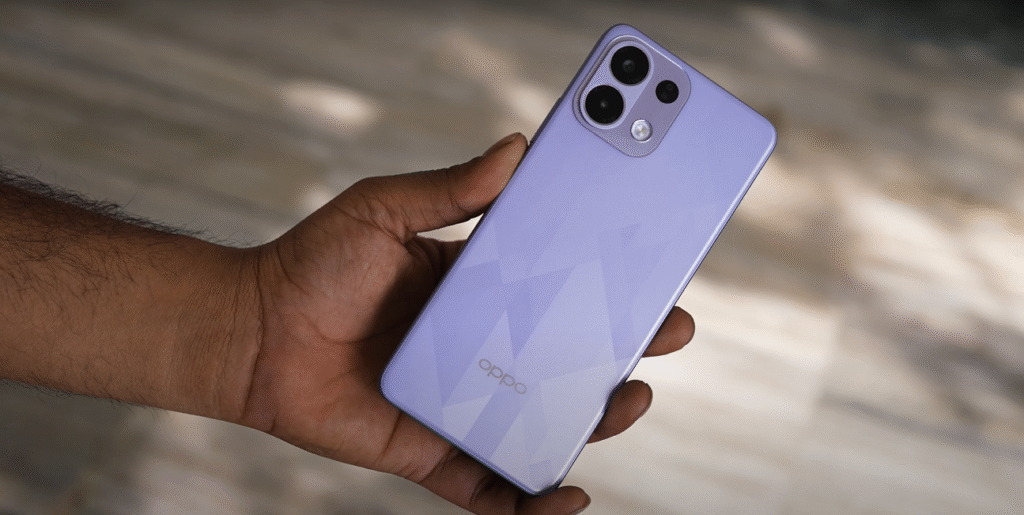

Unboxing: A Premium Package for ₹17,999
The OPPO K13 5G arrives in a sleek, dual-tone box that screams OPPO’s signature style—minimal yet elegant. Inside, you’ll find:
- The phone (I chose Midnight Black; Diamond Blue is also available)
- An 80W SuperVOOC charger with a Type-A to Type-C cable
- A soft TPU case—plush and grippy, perfect for immediate protection
- A SIM ejector tool
- Quick guides and warranty documentation
First impressions? Weighing 209 grams and measuring 8.45mm thin, it feels surprisingly light for its massive battery. The matte polycarbonate back with a diamond-cut pattern catches light beautifully, resisting fingerprints and exuding premium vibes. At this price, OPPO’s delivering a package that feels like a ₹25,000 phone.
Design & Build: Sleek, Durable, and Stylish
The OPPO K13 5G strikes a balance between form and function. Its polycarbonate back and frame keep weight down to 209 grams, despite the hefty 7000mAh battery—a feat that makes it feel less bulky than expected. The matte finish with a diamond-cut pattern adds a subtle shimmer under indoor lighting, setting it apart from the glossy backs of rivals like the Redmi A5. Available in Midnight Black and Diamond Blue, it’s a looker that stays smudge-free.
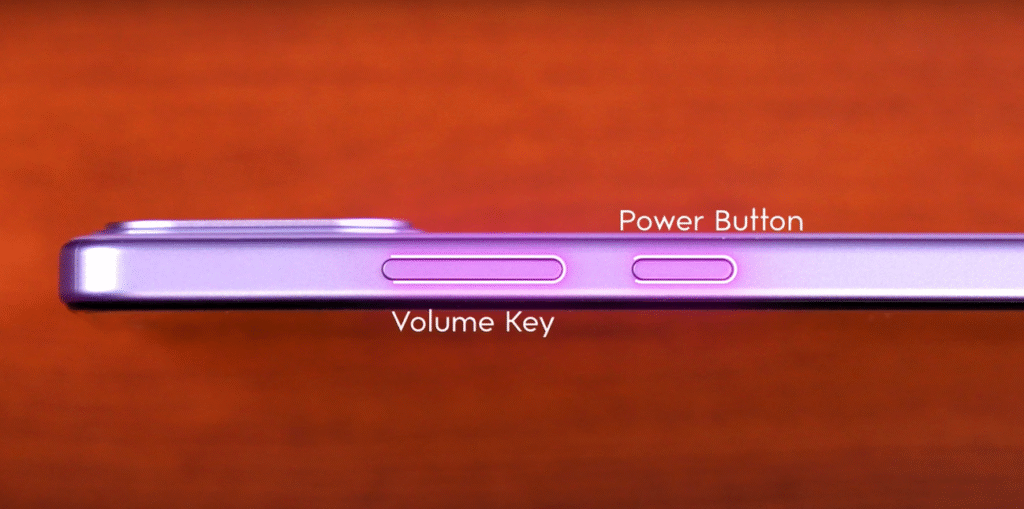
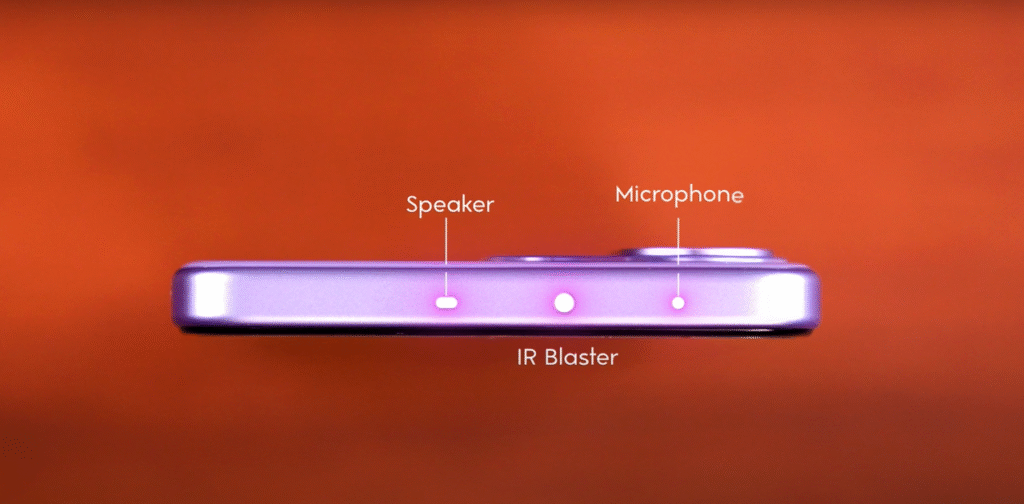
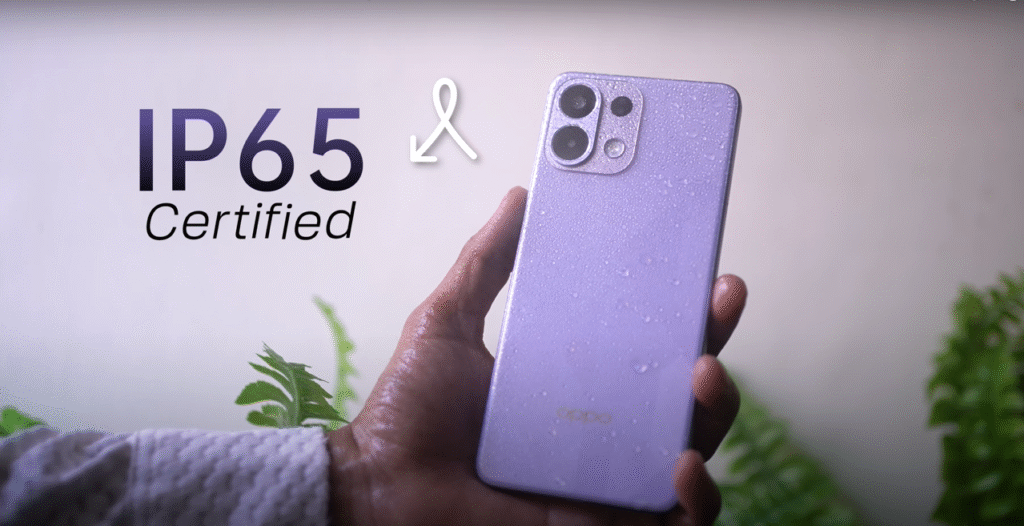
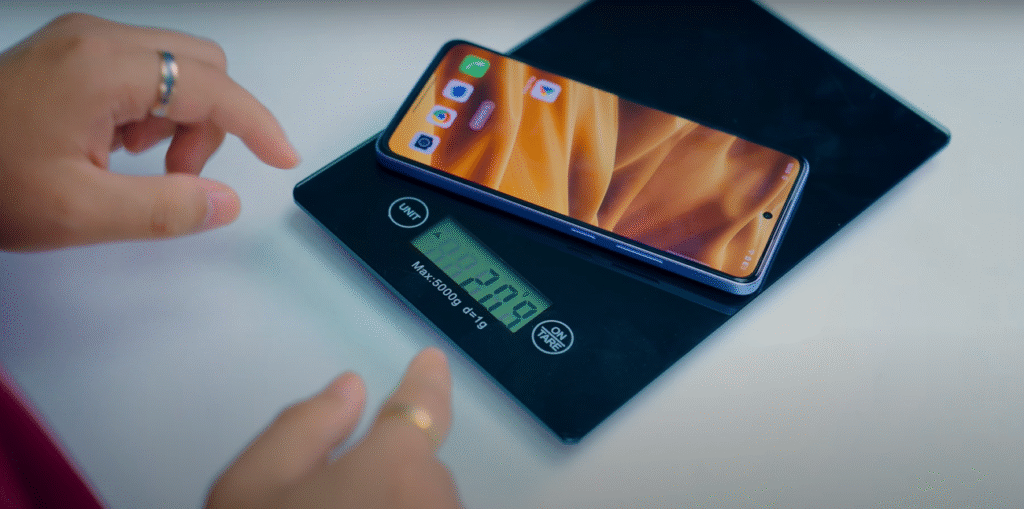
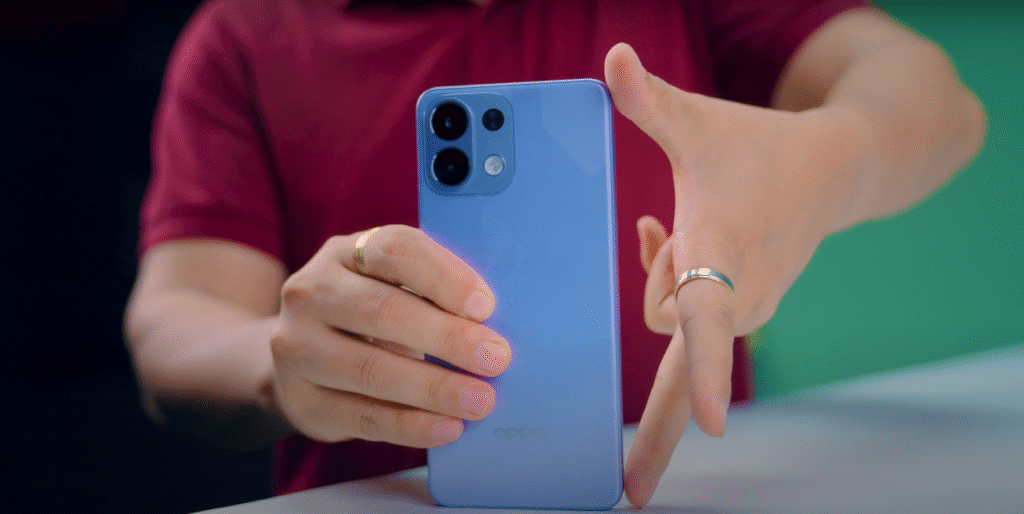
At 8.45mm thin, it’s comfortable for one-handed use, though its taller design (due to the 6.67” display) might stretch smaller hands. The IP65 rating ensures splash and dust resistance—proven when it survived a light Mumbai drizzle and a splash during testing. A 3ft drop onto tiles left no scratches, thanks to the included TPU case and sturdy build. Buttons (power and volume on the right) are tactile, and the IR blaster (top) lets you control your AC or TV—a practical perk for Indian homes. The dual nano-SIM tray (no microSD slot) and stereo speakers (bottom and top) round out a thoughtful design.
Verdict: A durable, stylish phone that feels premium without the price tag. The IP65 rating and smudge-free back are wins, but no microSD slot might limit storage for media hoarders.
Display: 120Hz AMOLED That Pops
The 6.67-inch FHD+ AMOLED display (1080×2400) is a standout, offering 120Hz refresh rate for buttery-smooth scrolling through Instagram or BGMI menus. With 1200 nits peak brightness, it’s legible under Mumbai’s harsh sunlight, and the 92.2% screen-to-body ratio with slim bezels creates an immersive experience. Colors are vibrant—watching Heeramandi on JioCinema felt cinematic, with deep blacks and punchy hues. 2160p YouTube playback is crisp, though the lack of HDR certification is a minor miss compared to the Infinix Note 50s 5G.
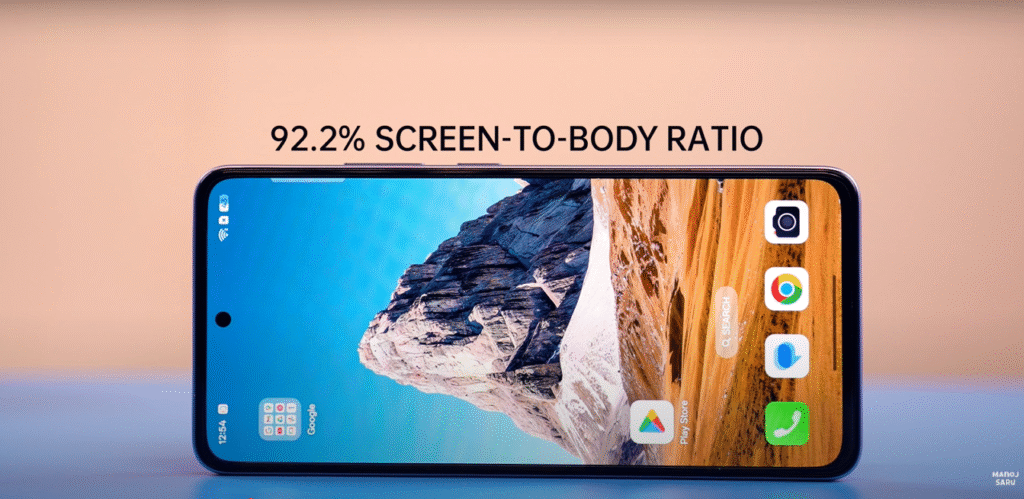
The taller aspect ratio makes it ideal for vertical content like reels, but gaming and movies feel equally engaging. In-display fingerprint scanner is fast and 99% accurate, rivaling pricier phones. During testing, the display handled glare well at Marine Drive, and PWM dimming kept late-night scrolling easy on the eyes.
Verdict: A vibrant, smooth AMOLED that punches above its price. No HDR is a bummer, but the 120Hz refresh and brightness make it a multimedia delight.
Performance: Snapdragon 6 Gen 4 Delivers
Powered by the Qualcomm Snapdragon 6 Gen 4 (~686,000 AnTuTu), paired with 8GB LPDDR4x RAM and 128GB/256GB UFS 3.1 storage, the K13 5G is a performance beast. Apps like WhatsApp, Zomato, and Spotify launched instantly, and multitasking (10 Chrome tabs + YouTube) was seamless. UFS 3.1 storage—rare under ₹20,000—ensures snappy app installs and file transfers, outpacing the Infinix Note 50s 5G’s UFS 2.2.
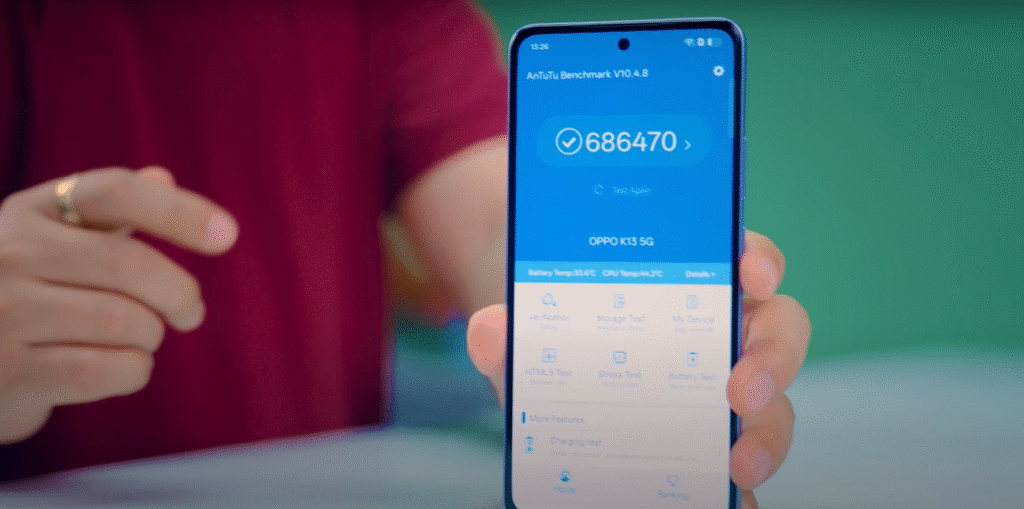
Gaming is where it shines. BGMI ran at 60 FPS on Ultra HD settings, with HyperBoost mode and dedicated gaming antenna keeping pings low and frames stable during 2-hour sessions. COD Mobile hit 60 FPS on high settings, with no lag or frame drops. The 5700mm² VC cooling and 6000mm² graphite cooling kept temps under control—no throttling even after 90 minutes of Free Fire. Game Mode (network optimization, orientation lock, notification muting) made clutch moments in BGMI distraction-free.
Verdict: A gaming and multitasking powerhouse. The Snapdragon 6 Gen 4 and UFS 3.1 make it a top performer under ₹20,000, rivaling pricier phones like the Redmi A5.
Camera: Decent Snaps, Stellar Selfies
The dual rear camera setup includes a 50MP main sensor (Sony-based) and a 2MP depth sensor, paired with a 16MP Sony IMX480 selfie camera. While not a photography champ, it holds its own for the price.

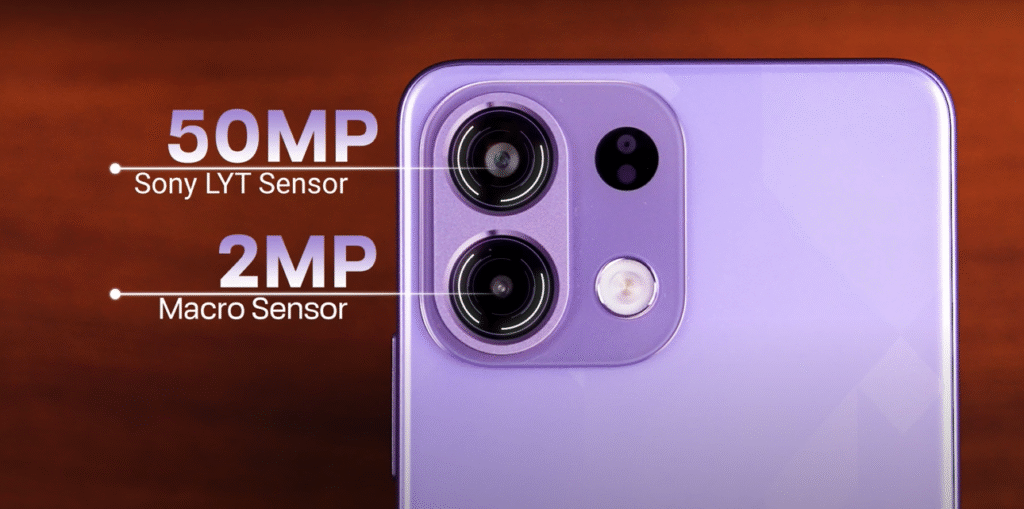
- Daylight: The 50MP main sensor captures vibrant, well-balanced shots with accurate white balance. Photos at Marine Drive had vivid colors, though details soften slightly at 2x zoom.
- Portraits: Portrait mode (1x and 2x, 35mm/54mm) nails edge detection and adds natural bokeh with a subtle flare effect. Colors lean contrast-heavy, but results are Instagram-ready.
- Low-Light: Night shots are decent—Night Mode reduces noise but loses detail in shadows. Not as strong as Vivo V50’s low-light prowess.
- Selfies: The 16MP Sony selfie camera shines, delivering crisp indoor and outdoor shots. Slight beautification (toggle off for natural looks) gives a polished vibe—perfect for reels.
- Video: 4K 30FPS rear video is stable with decent colors but lacks dynamic range. 1080p 30FPS front video (with EIS) is vlogger-friendly but not as smooth as Realme GT6’s 4K 60FPS.
Compared to the Infinix Note 50s 5G’s 64MP camera, the K13 5G’s selfies are better, but rear video lags. AI processing enhances colors, though it takes a second post-capture.
Verdict: A solid camera for social media, with standout selfies and decent portraits. Video and low-light could improve, but it’s a strong contender under ₹20,000.
Battery: 7000mAh Marathon Runner
The 7000mAh battery—OPPO’s largest yet—is the K13 5G’s crown jewel. During testing, it lasted 2.5 days of mixed use (6 hours screen-on, calls, JioCinema, 4 hours BGMI, Airtel 5G), ending at 25%. Heavy use (reels, gaming, navigation) dropped it to 20% after 18 hours—a feat unmatched by the Infinix Note 50s 5G’s 5500mAh. Graphite-based battery tech ensures longer life cycles, ideal for long-term use.
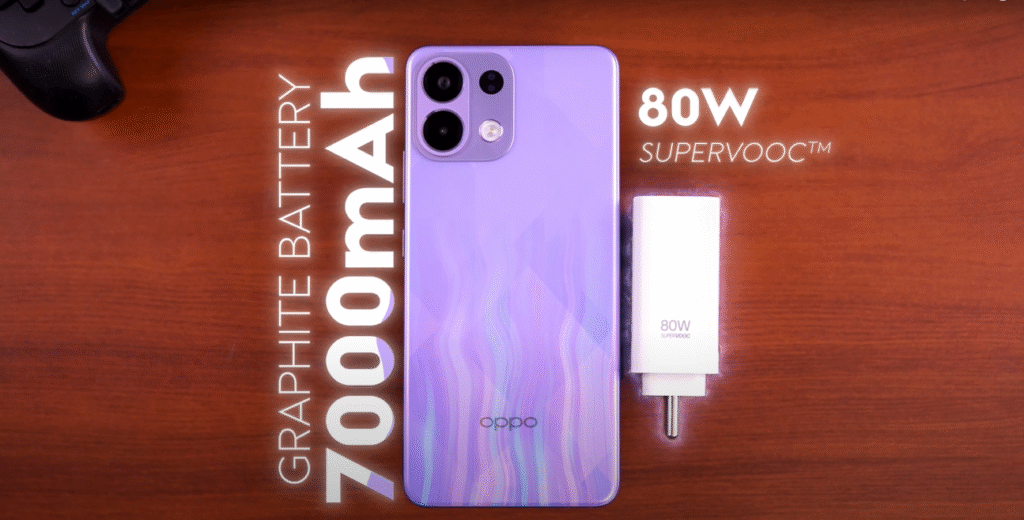
80W SuperVOOC charging is blazing—50% in 20 minutes, full charge in ~45 minutes, outpacing Redmi A5’s sluggish 15W. During a quick chai break, it hit 60% from 10%. Battery Saver mode stretched usage to nearly 3 days at 60Hz.
Verdict: A power bank in phone form—perfect for travelers, gamers, and anyone tired of daily charging. The 80W charger seals the deal.
Software: ColorOS 15 Shines
Running ColorOS 15 on Android 15, the K13 5G offers a polished experience. Animations are fluid, rivaling Nothing Phone 3A Pro’s clean UI, and bloatware (Hot Apps, Hot Games) is minimal and uninstallable. AI features—AI Editor (clarity enhancer, eraser, reflection remover), AI Link Boost 2.0 (network optimization)—add practical value. 2 years of OS updates (up to Android 17) and 3 years of security patches ensure longevity.
Gestures, always-on display, and customizable icons make navigation a breeze. During testing, the UI handled multitasking and gaming without hiccups, though pre-installed apps required a quick cleanup.
Verdict: Smooth, feature-packed, and future-proof—ColorOS 15 is one of the best budget UIs, though minimal bloat could be better.
Connectivity & Extras
The K13 5G is ready for India’s 5G rollout with dual-band Wi-Fi, Bluetooth 5.2, and AI Link Boost 2.0 for stable connections. The dedicated gaming antenna kept pings low during BGMI matches on Airtel 5G. An IR blaster lets you control appliances—a rare perk under ₹20,000. Dual nano-SIM support ensures flexibility, but no NFC limits contactless payments.
Verdict: Future-proof connectivity with gamer-friendly extras. The IR blaster is a nostalgic win, but NFC’s absence stings for urban users.
Comparison: OPPO K13 5G vs. Rivals
| Feature | OPPO K13 5G (₹17,999) | Infinix Note 50s 5G (₹14,999) | Redmi A5 (₹22,999) |
|---|---|---|---|
| Display | 6.67″ AMOLED 120Hz | 6.78″ AMOLED 144Hz | 6.88″ HD+ 120Hz IPS |
| Processor | Snapdragon 6 Gen 4 | Dimensity 7300 Ultimate | Unisoc T7250 |
| Battery | 7000mAh, 80W | 5500mAh, 45W | 5200mAh, 15W |
| Camera | 50MP + 2MP, 16MP | 64MP + 2MP, 13MP | 32MP + 2MP, 8MP |
| Storage | 128GB UFS 3.1 | 128GB UFS 2.2 | 64GB + microSD |
Vs. Infinix Note 50s 5G: Bigger battery, faster charging, UFS 3.1—Infinix’s 144Hz display and 64MP camera edge out slightly.
Vs. Redmi A5: AMOLED, better processor, superior battery—Redmi’s pricier with weaker specs.
Hands-On Testing: Real-World Performance
I put the OPPO K13 5G through Mumbai’s chaos:
- Display: Streamed Dune: Part Two on JioCinema—colors popped, 120Hz scrolling was smooth. No glare issues at Gateway of India.
- Performance: Played BGMI for 2 hours—60 FPS on Ultra HD, no lag. Multitasking (Spotify + WhatsApp + Zomato) was flawless.
- Camera: Shot portraits at Bandra Fort—edge detection was spot-on; selfies in dim cafés were vibrant. Night shots at Worli Seaface were decent but soft.
- Battery: 2.5 days of mixed use—6 hours screen-on, 20% left. 80W charged 60% in 20 minutes.
- Durability: Survived a 3ft drop onto tiles and light rain—IP65 and TPU case delivered.
Helpful Tips for OPPO K13 5G Owners
- Maximize Battery: Use Battery Saver at 60Hz for 3-day stamina without sacrificing smoothness.
- Camera Tricks: Stick to Portrait Mode at 2x for best bokeh; disable beautification for natural selfies.
- Gaming Edge: Enable HyperBoost and Game Mode for locked 60 FPS in BGMI.
- Storage Tip: Choose the 256GB variant—128GB fills fast with 4K videos and games.
- Audio Boost: Pair TWS earbuds—stereo speakers are loud but bass-light.
- Protect It: Keep the TPU case on—IP65 handles splashes, but avoid deep water.
Verdict: A Budget Powerhouse Worth Buying
The OPPO K13 5G at ₹17,999 (8GB/128GB, ₹16,999 with ₹1,000 offer) or ₹18,999 (8GB/256GB, ₹17,999 with offer) is a budget triumph. Its 7000mAh battery, 120Hz AMOLED, Snapdragon 6 Gen 4, and 80W charging deliver unmatched value, continuing OPPO’s K-series legacy of affordability. The decent camera, stellar selfies, and gaming prowess make it ideal for students, gamers, and multimedia buffs. Minor drawbacks—average video quality, contrast-heavy photos, and no NFC—don’t overshadow its strengths.
Compared to the Infinix Note 50s 5G (₹14,999), it offers a bigger battery and faster storage; against the Redmi A5 (₹22,999), it’s a clear winner in specs and price. If you need a long-lasting, stylish phone that excels in performance and display, the OPPO K13 5G is a Diwali steal. Available from April 25, 2025, on Flipkart, Amazon, and offline stores—grab it before stocks vanish! What’s your take? Drop a comment below!
Author Section
Technology Gyan
Hey, tech enthusiasts! I’m Technology Gyan, one of India’s fastest-growing YouTube channels for smartphone and gadget reviews, unboxings, and breaking tech news. With a passion for decoding the latest devices, I bring you daily videos packed with real-world insights, tested in India’s bustling streets and chaotic commutes. Owned by Armoks Media Private Limited, we’re here to help you pick your next gadget with honest, hands-on takes. Follow us for the freshest tech scoops—let’s dive into the future!

